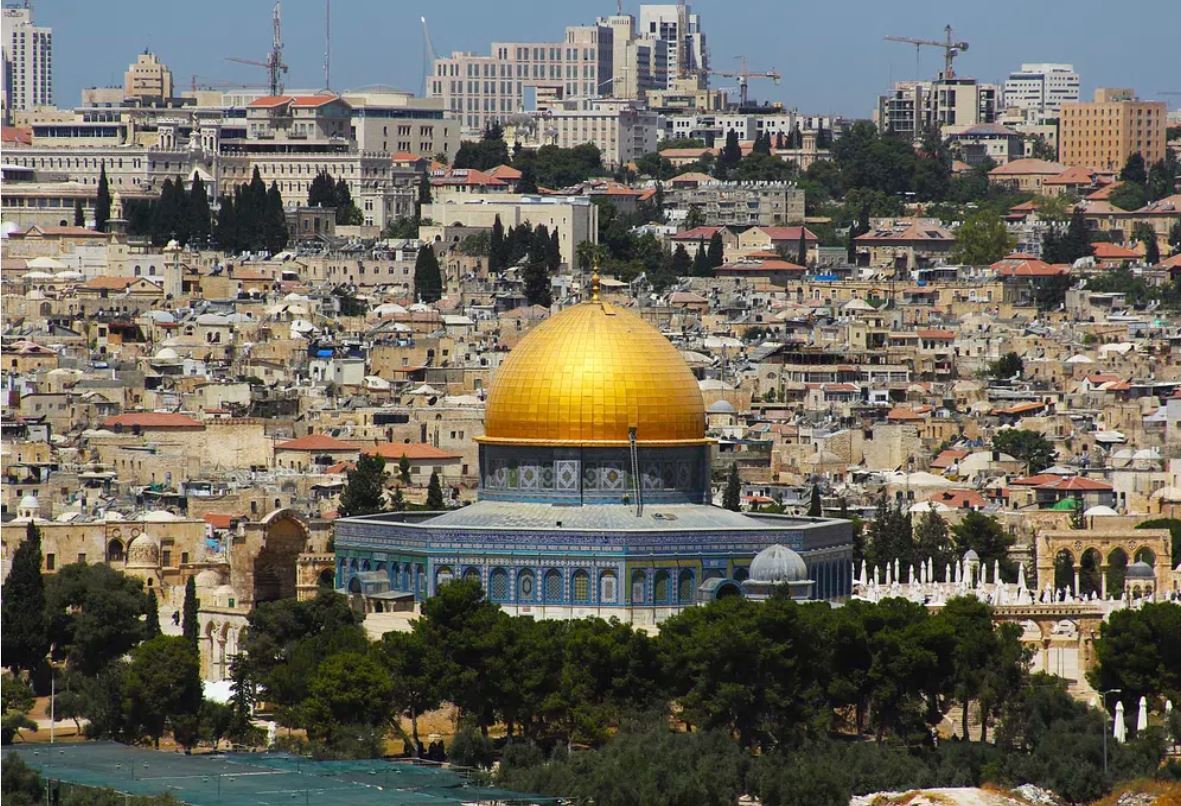

Photo Credit: Image via Raw Pixel.
Raw Pixel
A look back at the Jewish State in the 1960s reveals just how much things have changed since then.It is customary to romanticize one’s youth, nostalgia being a common reflection on a life lived.
In a related look back, the following focuses on a special era — that of 1960s Israel. I will not recount the wars, since the early 1960s in Israel was relatively peaceful, and by the time the Six-Day War began, I became a soldier, but that is another story.
As I look at today’s Israel, I marvel at the country’s progress, particularly in the economic and the defense spheres, with the Israel Defense Forces (IDF) being bigger and stronger, but not as resourceful and innovative as it was in the 1960s. It is, more pointedly, in the cultural arena that Israel in the 1960s was especially attractive — with idealism and patriotism typifying Israeli society. Although the Altalena Affair, which almost caused a civil war in 1948, had not been forgotten, by the 1960s, it had been put into historical storage.
Soon after Ben-Gurion formally declared Israel’s statehood in May 1948, Menachem Begin’s Irgun underground secured much needed arms in Europe for Israel’s defense against five invading Arab armies. Begin sought to share the arms with the newly formed IDF but insisted that 20% of the arms purchased by the Irgun go to units of the Irgun, which had been incorporated into the IDF. Ben-Gurion ordered the bombing of the Altalena. Several Holocaust survivors on the boat were killed, including two of my uncles, and many were wounded. Menachem Begin, to his eternal credit, warned against a civil war, resisting the demand of some of his Irgun comrades to fight back.
By the 1960s, veterans of the Irgun had been incorporated into the IDF, although not allowed to advance beyond the rank of lieutenant colonel. This situation did not change until several years later, when a change in leadership, in 1977, brought Begin’s Herut party to power. Mapai, the socialist workers’ party, led by Ben-Gurion since Israel’s independence, was defeated and unseated. Begin’s Herut (Freedom Party, later to become the Likud) brought welcome change to those who were not Mapainiks and who had been denied positions in the public sector.
While Israel’s nemesis, Egypt’s dictator Gamal Abdel Nasser, was busy killing royal Yemenite soldiers throughout the early and mid-1960s, Israel was enjoying immense progress, particularly in agriculture. Drip irrigation, invented by Israelis, allowed for the flowering of the desert. Although there were occasional provocations from Syria, and later in the 1960s from Palestinians in Jordan, they were relatively minor disturbances.
The youth in Israel were divided between the urban “Salon” kids and the Kibbutzniks. On Friday nights, the Salon groupies were going to parties and dancing slow dances to the sounds of Elvis, the Beatles, Cliff Richards, Paul Anka, The Platters, and Nat King Cole. But on a Saturday night, the Kibbutzniks and Salon kids shared the street and strolled on Tel Aviv’s Dizengoff Street. With its sidewalk cafés and steakhouses, it felt like little Paris. We were still a small and intimate society, and as you passed everyone on the street, you greeted him with the familiar “Ma Chadash” — “What’s doing?”
The country in the 1960s was a model for development and progress. Although the Arab nations boycotted Israel and tried to choke Israel economically, the developing states in black Africa and Asia sought out Israeli experts for assistance in developing some of their institutions — in particular, agriculture and government. Israel was flooded with black African trainees who came to learn Israeli methods. My family hosted a number of African trainees from Kenya, who would share Shabbat meals with us.
As we neared the drafting age of 18, whether you were a Salon kid or a Kibbutznik, you dreamed of enlisting into a combat unit. To shirk military service was a terrible stigma, and even the sick and medically impaired demanded that they be drafted. The IDF became the real integrator into Israeli society. Whether your family came from Arab counties or Eastern Europe, the IDF was the society’s “melting pot.”
The Kibbutznik in the early years of the state symbolized patriotism and sacrifice. They were the ones who manned the elite combat units in the IDF. In later decades, however, they were replaced by the patriotism of the National Religious “knitted kippot” youth, who were raised in Judea and Samaria, and who became leaders of elite IDF units.
“Small Israel,” or in Hebrew “Israel Ha’ktan’na,” was the Israel before the Six-Day War of June 1967. Israel was focused on nation-building. Israelis did not tear one another apart as they do today. The Mapai elites, though imbued with a socialist (economic) orientation, were, nevertheless, patriotic — unlike much of the Israeli political left today. Those were the years before television, computers, and cell phones. Israelis read more; discussed the topics of day civilly; and socialized in a variety of ways, especially with concerts from European artists, the Israeli Philharmonic (founded in 1936, prior to independence), and foreign movies. There were always long lines of those waiting to buy tickets. In Tel Aviv’s Dizengoff Square, we had the popular movie “palaces” of Esther and Chen. It was the beginning of the Americanization of Israel. Hollywood’s movies predominated. The movies and actors we saw made us love America. They were idealistic and patriotic, and it reinforced our idealism and patriotism.
A decade earlier, In the 1950s, we were Francophiles, with French culture having dominated the country. As grade-school children we knew about French Mirage and Mystère jet fighters, and AMX tanks, and we heard on the radio the French Les Compagnons de la Chanson, and the songs of Jacques Brel, Edith Piaf, and Charles Aznavour. But all that changed when Charles de Gaulle became France’s president and the war in Algeria ended.
Reparations paid by the German government for the Nazi Holocaust, which included stealing the property of millions of murdered Jews in Europe, brought relative prosperity to the country but weakened our egalitarian society. In the Israel of my youth, most people did not own a private car. We relied on public transportation, mostly buses. Then, suddenly, we were inundated with Mercedes cars, albeit mostly used by taxi drivers. In the mid-1960s, we had our first high-rise tower in Tel Aviv, called the Shalom Tower. Today, Tel Aviv’s skyline is replete with high-rise offices and apartment buildings, and to tourists, it appears as little Manhattan.
Yes, Israel has changed. Gone is the intimacy of the past. The uncompromising patriotism of the 1960s, although not altogether gone, has diminished, and national solidarity reappears only in times of war and tragedy. We must bring back the unity of purpose that allowed for the building of a flourishing Israel.
<img alt="
Image via <a data-cke-saved-href=" captext="
Image via Raw Pixel.




